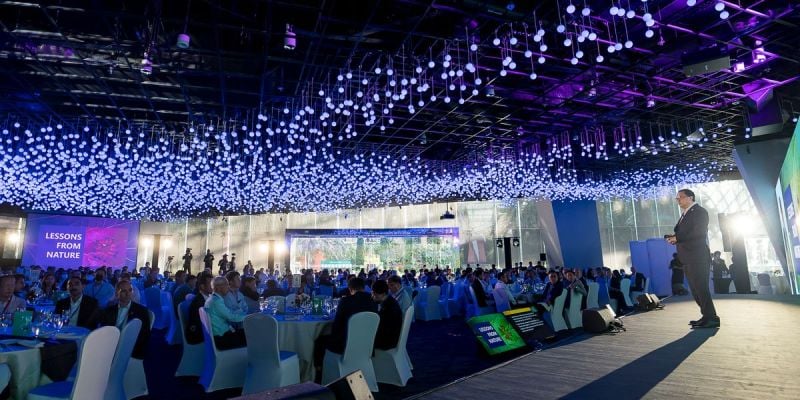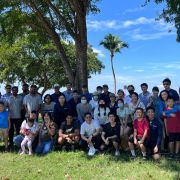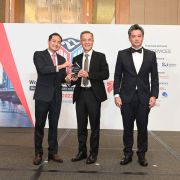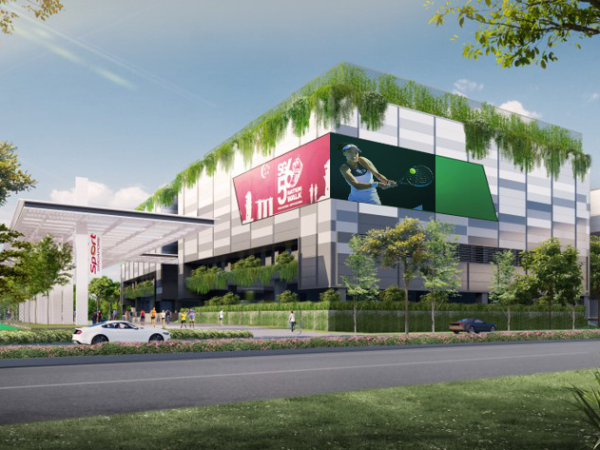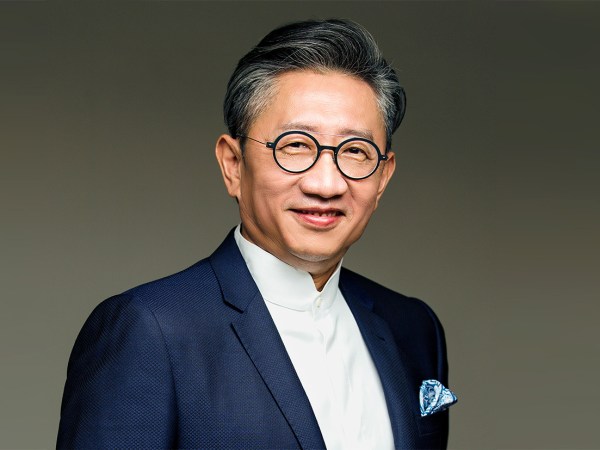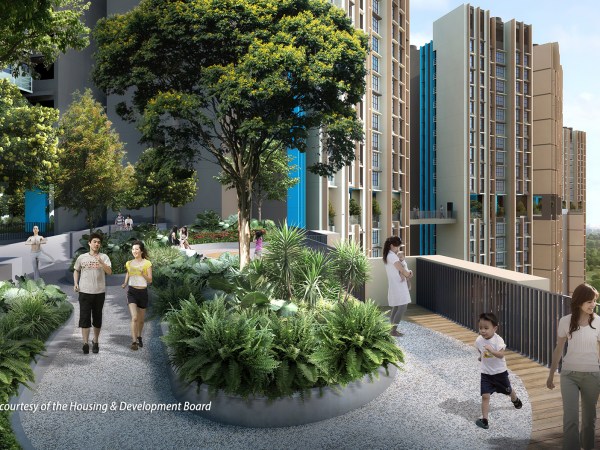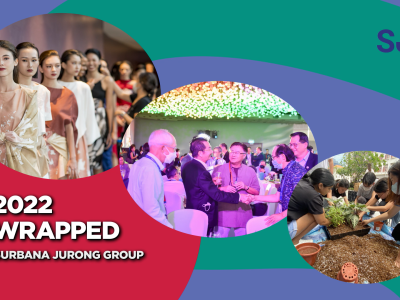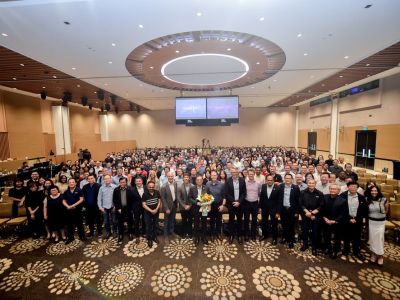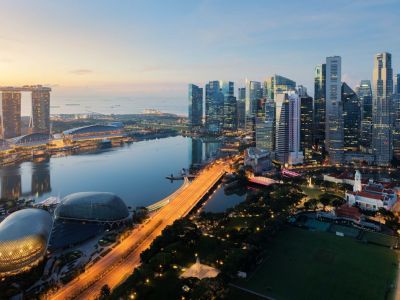(Above) Surbana Jurong Group CEO Wong Heang Fine welcoming guests at the group’s first client held in three years at Gardens by the Bay on 11 August.
For the first time in three years since the pandemic started, Surbana Jurong Group held an in-person client event at the Flower Field Hall at Singapore’s Gardens by the Bay in Singapore. Some 300 C-suite clients and partners from the public and private sectors attended the networking event, aptly named “Building the Business of Sustainability” to demonstrate SJ Group’s leadership in helping clients drive sustainability in their business.
The event began with a leaders’ dialogue and ended with a sustainable fashion show in collaboration with Temasek Polytechnic. Group CEO Wong Heang Fine kicked off the session, setting the scene for a robust discussion on climate change challenges.
Mr. Wong said. “Surbana Jurong Group is now a house of ten brands, with architects, designers, engineers, planners, integrated facilities management services practitioners, and technical experts – working together to offer the full project life cycle service for clients. The addition of Atelier Ten (in 2020 sharpens the Group’s focus on sustainability with its specialist climate engineering expertise.” He added that the venue was chosen as the award-winning Gardens by the Bay demonstrated the innovativeness of Atelier Ten’s environmental designs.
Atelier Ten sharpens SJ Group’s sustainability focus
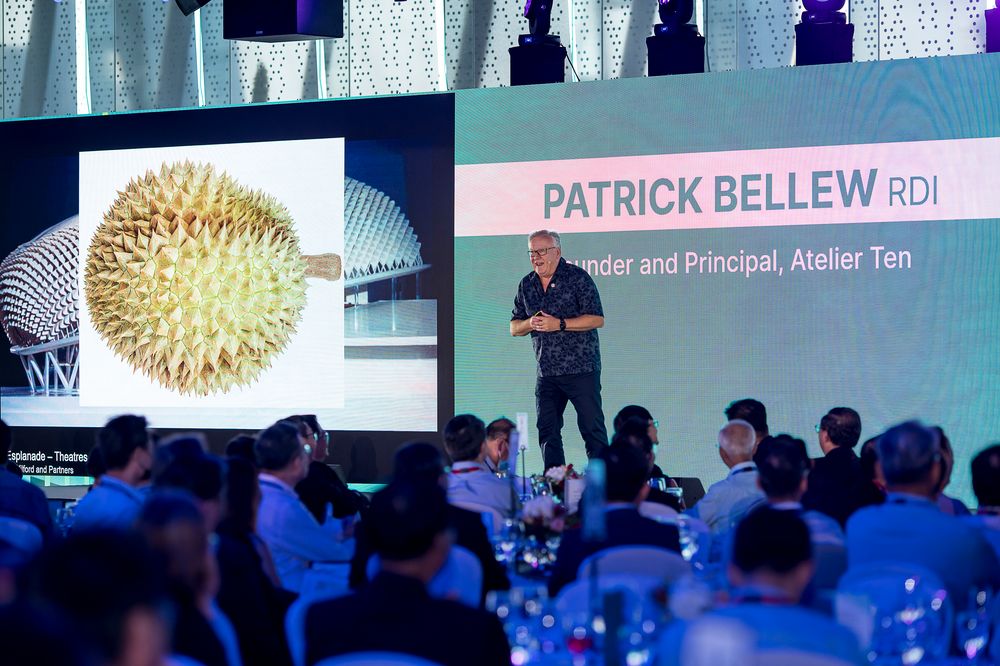
Mr. Bellew, the founding director of member company Atelier Ten, was the keynote speaker at the event.
Mr. Bellew, founding director of Atelier Ten, took clients through Atelier Ten’s innovative climate engineering solutions at Singapore’s iconic landmarks including Gardens by the Bay, Esplanade, and Jewel Changi Airport. He has over 30 years of experience designing high-performance buildings and systems in the UK, US, Asia, and Australia.
Over time, he shared, clients have also become more ambitious, resulting in more innovations from his team. Building net-zero buildings are not enough, he said. Increasingly, authorities in the UK are looking at embodied carbon, scrutinising the sources of raw materials such as steel, cement, or aluminum. “This is a wave that is coming Singapore’s way,” he concluded, “we have to know where our materials come from and what it cost to make them.”
SJ Bulletin highlights a few innovative solutions Mr. Bellew shared at the talk.
Designing shades for the Esplanade and bringing light to cooled conservatories
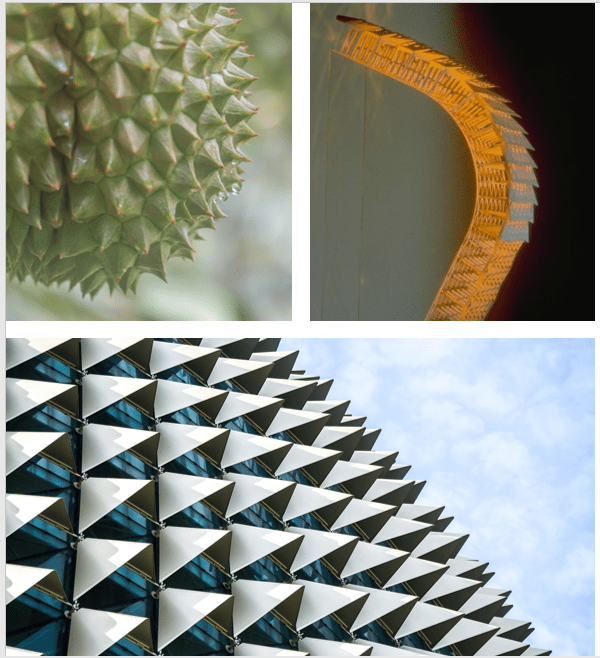
Atelier Ten’s play on the “leaf” shading device (inspired by the roof of Southeast Asian traditional architecture) for the Esplanade project and the resulting effect as “The Durian”.
Mr. Bellew’s first project in Singapore was the Esplanade – Theatres on the Bay project – when he helped design the shading of the glass bubble for the project. Inspired by thatched roofs in traditional Southeast Asian architecture, Mr. Bellew’s team designed pyramid-shaped shading panels which allow some light to enter the interior to animate the space while providing shade. The spiky shape of the shading panels led to the Esplanade being called “The Durian”, which means a local fruit prized for its unusual aroma and taste among locals.
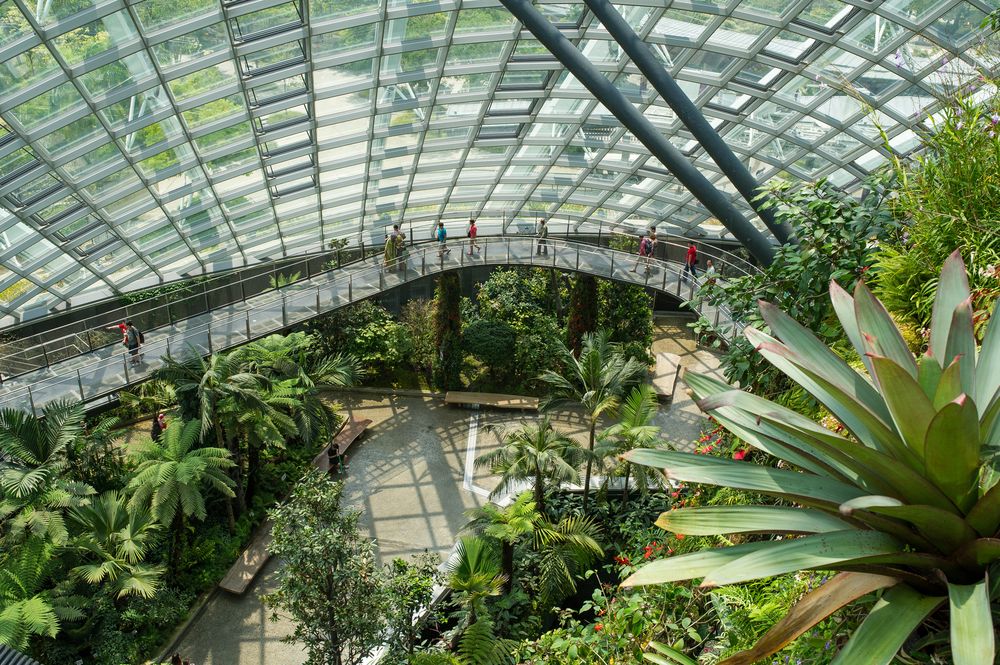
(Above) Plants thriving inside the conservatory (Below) the light requirements for the plants ultimately decided that the grid shell shape was most optimal for light to reach them, compared with the fin or the truss shapes the team studied.
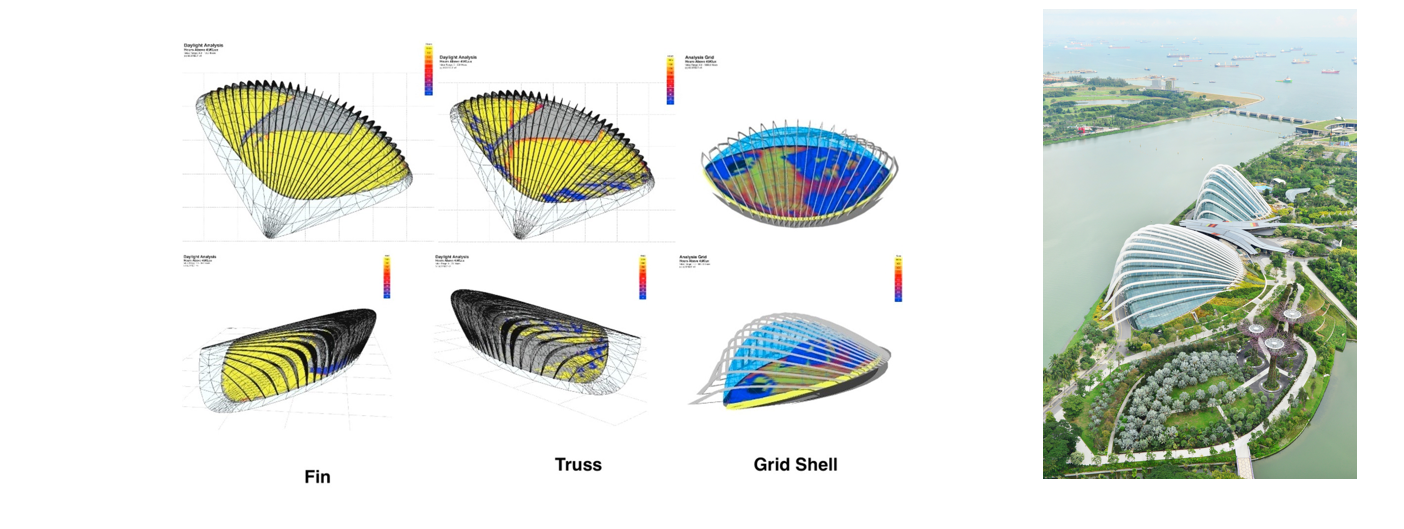
At Gardens by the Bay, the team studied where the plants come from as design requirements were influenced by temperature, humidity, and light. They came generally from the Mediterranean and tropical habitats.
The light required for European tulips, for example, is more than what Singapore can offer as Singapore skies are often cloudy. Mr. Bellew and the team eventually arrived at a slender grid shell shape for the gardens, to maximise light for the plants in it. His team also worked to ensure that the glass was carefully selected to let through 65 percent of the light and only 30 percent of the heat.
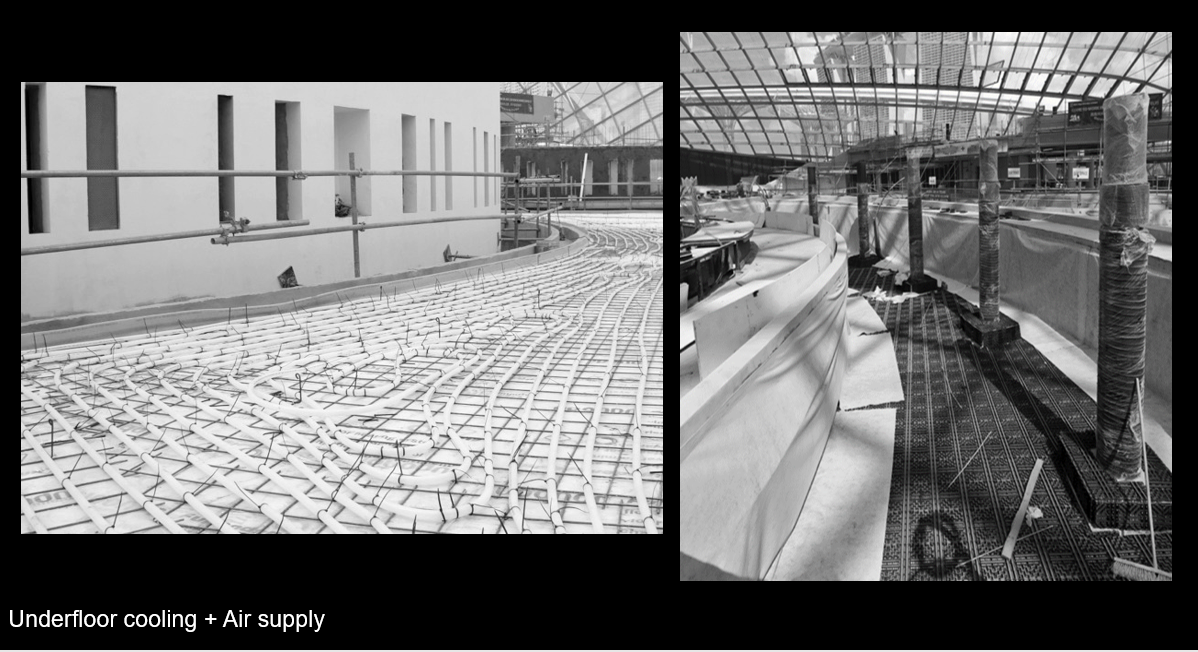
(Above) Screengrab of cooling pipes on the floor, which ensures that the temperature in the conservatory stays cool.
The temperature in the conservatory is carefully controlled to mimic the cold, pre-winter conditions to “trick” the plants into flowering.
Mr. Bellew’s team also intercepted a waste stream of horticultural cuttings collected from around Singapore roads and ports as biomass for the site. The resulting ash from using this biomass is used in two ways: as fertiliser for the plants in the Gardens and as an aggregate mixed into concrete. In addition, rainfall collected onsite is cleansed before being discharged into the Marina Reservoir. “Theoretically, the Gardens are net-zero,” he told his audience proudly.
Panel discussion
Mr. Bellew also participated in a short panel discussion moderated by Ms. Annie Koh, Ph.D, Professor Emeritus of Finance (Practice) at Lee Kong Chian School of Business at Singapore Management University. The other panelists were Mr. Tan Wooi Leong, SJ’s Managing Director for Energy & Industrial; Mr. Eugene Seah, SJ’s Managing Director of Smart City Solutions; and Ms. Lisa Bate, B+H Architects’ Global Sustainability Lead and Senior Principal.

(Above left) The panel was in action with Ms. Lisa Bate, the Global Sustainability Lead and Senior Principal of B+H Architects, speaking. (Above right) The panelists were (from left) Mr. Tan Wooi Leong, SJ’s Managing Director for Energy & Industrial; Mr. Eugene Seah, SJ’s Managing Director of Smart City Solutions; Ms. Bate, B+H Architects’ Global Sustainability Lead and Senior Principal and Mr. Bellew, founding director of Atelier Ten. The moderator is Annie Koh, Ph.D., Professor Emeritus of Finance (Practice) at Lee Kong Chian School of Business at Singapore Management University. She is holding a token of appreciation from SJ Group.
The panel discussed the issues around building the business of sustainability, focussing on fostering a culture of sustainability amongst leaders and employees and helping clients to manage costs whilst achieving climate goals. All agreed on a ground-up, top-down approach to building a positive culture that prioritises sustainability.
Ms. Bate believes designers and engineers have real power in leading the sustainability agenda through sustainable sourcing. “When we collect our specification writers together across the Group, SJ has an incredible amount of clout contractually,” she said. “Using reclaimed steel, recycled aggregate and carbon captured concrete alone, would make massive reductions in the Scope 3 (embodied carbon) supply chain.”
“Leaders need to understand the value of more sustainable decision-making,” commented Mr. Bellew. “There are plenty of examples of companies who have outperformed the stock market while being sustainable. Stranded assets and competitors will lose out in a much closer time horizon.”
For Mr. Seah, data is necessary to drive the change necessary to embrace sustainability in an organisation. He said: “It is vital to use clean data and a clear framework in the digital and technological support of sustainability efforts so that this change can be inculcated into the DNA of the company in the way it designs and operates.”
Mr. Tan pointed out that the industry needs to nurture young engineers who need to understand carbon and energy transition for the huge environmental and economic value their work will bring to the planet. “The young are nonetheless very interested as these projects are purposeful and that drives them,” he said.
Sustainable fashion show
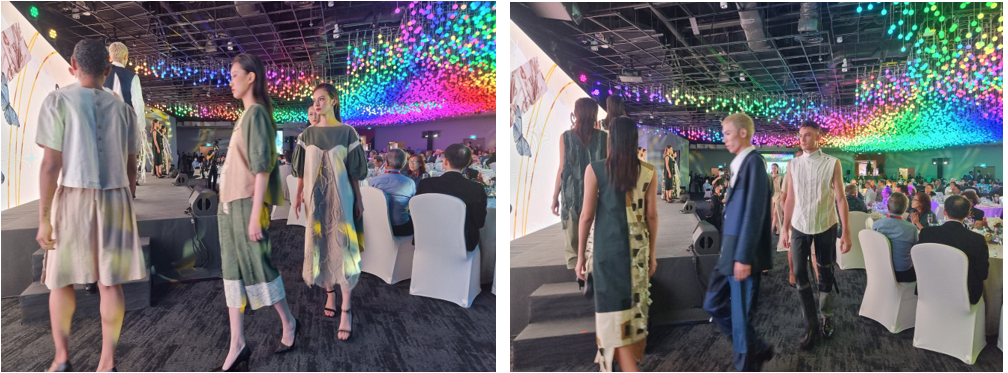
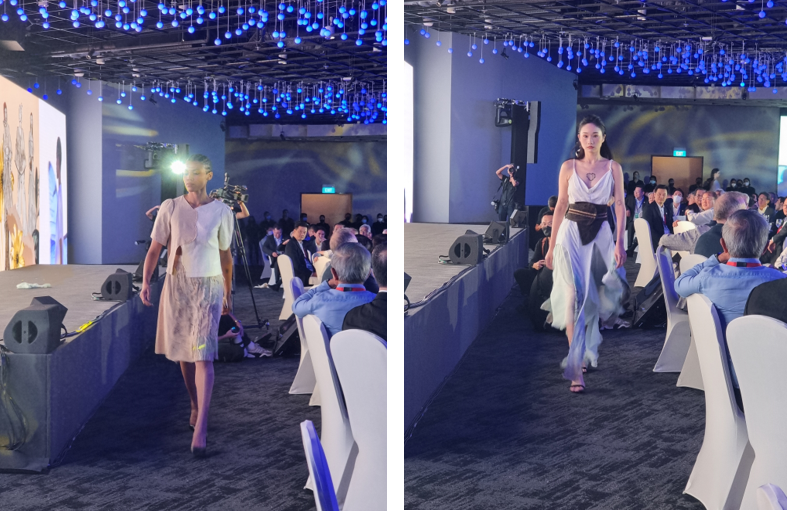
The programme ended with a sustainable fashion show. The pieces in these collections were designed by alumni of the Temasek Polytechnic’s School of Design using upcycled fabrics and dyed with beetroot, coffee, cocoa, and butterfly pea.
SJ Group Chairman Chaly Mah also took the opportunity during dinner to thank GCEO, who recently announced his intention to retire in September 2022. Mr. Mah said: “Heang Fine has assembled a strong leadership team and left behind a very strong foundation to build SJ for the next chapter of growth.”
Please follow SJ’s LinkedIn and Facebook pages for upcoming stories about this event


